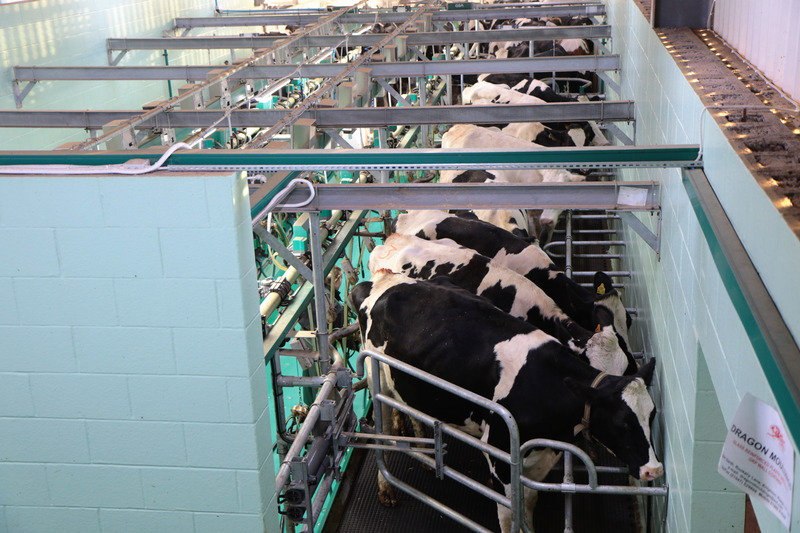Interest in the increasing carbon footprint of the dairy industry has grown considerably over the past few years and growing greenhouse gas emissions from the milk production process are a contributing factor.
A number of greenhouse gases (GHG) are produced from fertiliser production through to consumption and disposal of packaging. Methane is produced as a direct emission from cows and carbon dioxide and nitrous oxide are released as a result of the production of packaging, transportation, and fertilisers.
Studies have revealed that the world’s top 10 dairy companies emitted roughly 231 million tons of carbon dioxide in 2016, which is the equivalent of half of France’s total greenhouse gas footprint1. Therefore, a change needs to be made.
What is being done to cut Greenhouse Gas Emissions in the Milk Production Process?
Under the 2008 Climate Change Act, the agricultural industry has pledged to reduce 2008 GHG emissions by 11% by 20202. Each and every dairy farmer must contribute towards this national goal. The reduction of gas emissions is only possible alongside its careful monitoring and measurement, which requires a gas sensor.

Attempts to cut GHG emissions by the largest dairy firm in Europe, Arla, have been discussed in a recent article by the BBC3. The firm aims to make its operation carbon-neutral by 2050 through radical changes and has already seen a 20% reduction in carbon dioxide from production and packaging alone.
Some alternative ways that dairy farmers can decrease their carbon dioxide and methane emissions in the milk production process include increasing milk yield, increasing animal welfare, improving fertility and increasing manure management (e.g. covering stored manure, adding acid to slurry and biogas production.4) Furthermore, they can attempt to reduce energy consumption through the minimisation of transportation and electricity usage.
Sensors for the Milk Production Process
Edinburgh Sensors offer several solutions for the monitoring and measurement of methane and carbon dioxide during the milk production process. Our range of OEM sensors are manufactured to the highest specification, and can be easily integrated into a wide range of systems. To learn more about our solutions, or to request a bespoke solution to meet your needs, contact a member of our team.
Let us help…
We hope you have enjoyed learning more about how our range of products can help during the milk production process. If you are interested in any of our products for your Milk Production Process gas sensing requirements, please do not hesitate to get in touch and contact us today.
To be the first to read all the latest news and applications from Edinburgh Sensors, sign-up to our monthly newsletter and join us on social media.
References
1. Shoup, M. Dairy industry disputes grain report on global GHG emissions, dairyreporter.com https://www.dairyreporter.com/Article/2017/11/15/Dairy-industry-disputes-GRAIN-report-on-global-GHG-emissions (accessed April 2019)
2. Dairyco (2012) Greenhouse gas emissions on British dairy farms https://dairy.ahdb.org.uk/media/623464/greenhouse_gas_emissions_on_british_dairy_farms.pdf (accessed April 2019)
3. BBC News, Climate change: Pledge to cut emissions from dairy farms, https://www.bbc.co.uk/news/science-environment-47499656 (accessed April 2019)
4. Sonesson, U., Cederberg, C. and Berglund, M. (2009) Food and agriculture Organisation of the United Nations Animal Production and Health Division http://www.klimatmarkningen.se/wp-content/uploads/2009/12/2009-3-milk.pdf (accessed April 2019)

